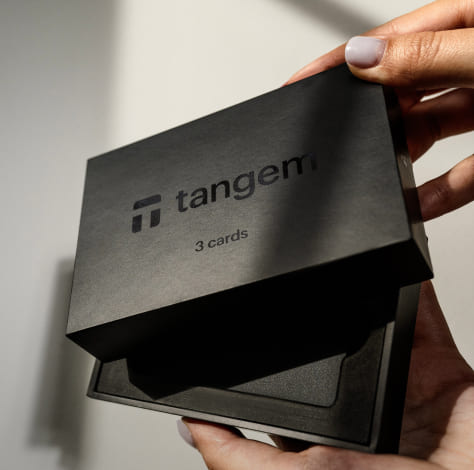Over the past decade, cryptocurrency has transformed digital finance, making security metrics important for safeguarding assets. Understanding how to measure your hardware wallet’s protection level can significantly reduce the risk of theft or loss. Evaluating factors like encryption strength, backup options, and user authentication provides insights into the effectiveness of your wallet. By prioritizing these metrics, you can enhance your protection against evolving threats in the crypto landscape.
Key Takeaways:
- Assess the physical security of hardware wallets, including tamper-proof features and secure element integration.
- Evaluate recovery options and backup measures to ensure access to funds in case of device loss or failure.
- Monitor firmware updates and security patches to maintain up-to-date protection against vulnerabilities.
Understanding Hardware Wallets
The landscape of cryptocurrency storage has evolved significantly, leading to the development of hardware wallets. These physical devices are designed to securely store private keys, allowing users to manage their cryptocurrency assets while minimizing exposure to online threats. Unlike software wallets that are connected to the internet, hardware wallets operate offline, reducing the risk of hacking and unauthorized access.
What is a Hardware Wallet?
An individual hardware wallet is a specialized device built to hold and secure cryptocurrencies. These wallets generate and store private keys in a secure environment, ensuring that the keys never leave the device. This method provides an additional layer of security, as the keys cannot be easily extracted or compromised through online vulnerabilities.
Importance of Hardware Wallets in Crypto Security
Around the cryptocurrency community, hardware wallets are recognized as one of the safest options for securing digital assets. They offer robust protection against malware, phishing attacks, and unauthorized access, which are prevalent in today’s digital landscape. By keeping private keys offline, users significantly reduce the risk of theft compared to software wallets and exchanges.
Plus, using hardware wallets not only enhances security but also promotes user control over personal assets. This self-custody approach eliminates reliance on third parties, thereby minimizing the risks of exchange hacks and loss of funds due to breaches. Ensuring the safety of cryptocurrency investments through a hardware wallet fosters confidence among users, allowing them to manage their holdings with peace of mind.
Key Security Metrics for Hardware Wallets
Assuming you want to evaluate the security of your hardware wallet, assessing various key security metrics becomes imperative. These metrics include the device’s physical security, its firmware integrity, and the effectiveness of its encryption protocols. Furthermore, you should consider the wallet’s user interface for risk factors, as usability can impact your overall security posture. Regular software updates and community reviews also play a significant role in determining a wallet’s reliability.
Vulnerability Assessment
Beside the fundamental metrics, conducting a vulnerability assessment will help uncover potential gaps in your hardware wallet’s security. This process often involves testing for known exploits, checking the device’s resistance against various attack vectors, and ensuring that anti-tamper measures are in place. Evaluating the vendor’s past security incidents and how promptly they addressed vulnerabilities can provide insights into their commitment to user safety.
Recovery and Backup Options
Wallets should offer robust recovery and backup options to ensure that you can regain access to your crypto assets in case of loss or theft. Look for hardware wallets that provide a secure way to store recovery seed phrases, as a compromised seed can lead to dire consequences. The availability of options like multi-signature transactions can add an extra layer of safety during the recovery process.
Backup solutions can include seed phrase backups, encrypted copies stored in safe locations, or using hardware wallets with advanced recovery features. Without proper backups, users risk losing their digital assets permanently. Evaluating these options in conjunction with the hardware wallet’s overall protection level is vital for ensuring the integrity of your investments.
Measuring Protection Levels
To assess the security of hardware wallets, it’s important to establish a framework for measuring protection levels. This involves evaluating their resistance to threats such as physical tampering, unauthorized access, and software vulnerabilities. By quantifying these aspects, users can make informed decisions about the safety of their cryptocurrency assets.
To accurately measure these protection levels, users should consider implementing various security metrics that assess the device’s overall performance. These metrics can involve both qualitative and quantitative assessments, focusing on user experience, potential attack vectors, and the wallet’s ability to recover from security breaches.
Testing for Unauthorized Access
The process of testing for unauthorized access includes attempts to breach the wallet’s security measures, such as attempting to bypass PIN codes or cryptographic protections. Regular penetration testing can shed light on potential weaknesses in the wallet’s design and alert users to any vulnerabilities they might face in real-world situations.
Identifying unauthorized access is critical—not only for preventing loss but also for ensuring that sensitive data is not compromised. By conducting systematic tests, users can reinforce the security protocols in place and understand the wallet’s resilience against various threat scenarios.
Evaluation of Firmware Integrity
Before investing in a hardware wallet, it is necessary to evaluate its firmware integrity thoroughly. This involves running checksum verifications and employing tools to confirm that the wallet operates with the official firmware provided by the manufacturer. Firmware integrity ensures that the wallet functions as intended, free from malware or tampering that could facilitate unauthorized access to stored assets.
This verification process is paramount not only for the wallet’s functionality but also for protecting users against malicious attacks that exploit outdated or compromised firmware. A wallet exposed to such threats can lead to significant loss of funds and compromise sensitive cryptocurrency data. Ensuring that firmware is validated and securely updated minimizes the risks associated with potential vulnerabilities, allowing for a safer storage environment for your digital assets.
Best Practices for Enhancing Hardware Wallet Security
Unlike traditional wallets, hardware wallets require proactive measures to ensure optimal security. Using a hardware wallet does not guarantee absolute protection; users must adopt best practices to minimize risks. Prioritizing security can significantly reduce exposure to threats such as phishing attacks, malware, and physical theft.
Regular Updates and Patches
On a regular basis, hardware wallet manufacturers release firmware updates to address vulnerabilities and improve security features. Users should consistently monitor these updates and install them promptly to mitigate risks associated with outdated systems. Neglecting to update a hardware wallet can leave it vulnerable to security breaches and exploits.
Secure Storage Locations
Above all, the physical storage of a hardware wallet should be treated as an extension of its digital security. Keeping the wallet in a secure location, such as a safe or a locked drawer, is crucial to prevent unauthorized access and theft. Additionally, avoiding public or easily accessible places can further safeguard the wallet against physical threats.
Updates to the environment where a hardware wallet is stored can amplify its protection. Utilizing fireproof and waterproof containers adds an extra layer of safety against environmental hazards. Furthermore, using security measures such as surveillance cameras and alarm systems can deter potential intruders and enhance overall protection of both the hardware wallet and its contents.
Comparing Hardware Wallets
Your decision on a hardware wallet can significantly affect your cryptocurrency security. It’s important to understand the features and security levels of various wallets to choose the right one that meets your needs.Popular Hardware Wallet Options
| Wallet | Key Features |
|---|---|
| TrezorSome of the links on this page are affiliate links. If you purchase a cold wallet through these links, we may earn a commission at no extra cost to you. Model T | Touchscreen, open-source software, supports multiple cryptocurrencies. |
| LedgerSome of the links on this page are affiliate links. If you purchase a cold wallet through these links, we may earn a commission at no extra cost to you. Nano X | Bluetooth connectivity, large storage capacity, supports over 1800 coins. |
| Coldcard Wallet | Bitcoin-only focus, advanced security features, air-gapped transactions. |
Security Ratings and Comparisons
Wallets come equipped with varying levels of security, and understanding these ratings helps identify the best options. The security ratings often reflect the wallet’s susceptibility to hacks, the robustness of its cryptographic protections, and the integrity of its software updates.Security Ratings Table
| Wallet | Security Rating |
|---|---|
| TrezorSome of the links on this page are affiliate links. If you purchase a cold wallet through these links, we may earn a commission at no extra cost to you. Model T | 8/10 |
| Ledger Nano X | 9/10 |
| Coldcard Wallet | 9.5/10 |
Around the cryptocurrency community, hardware wallets are often rated based on their vulnerability to different types of attacks. Factors such as firmware updates, recovery seed security, and user compliance play significant roles in these ratings. While some wallets excel due to their comprehensive security protocols, others may fall short, leaving users’ assets at risk.Further Analysis of Security Ratings
| Factor | Importance |
|---|---|
| Firmware Updates | Highly important for mitigating vulnerabilities. |
| Seed Storage Security | Essential for recovering assets in case of loss. |
Lastly, analyzing security ratings and comparing hardware wallets reveals significant disparities in protection levels. Evaluating factors such as software integrity and user handling is vital in ensuring that your hardware wallet remains a safe haven for your cryptocurrency investments.
Case Studies
Now, case studies provide valuable insights into the efficacy of hardware wallet security measures in protecting assets. Here are some notable examples that showcase different protection levels:
- Case Study 1: In 2021, a hacker exploited vulnerabilities in a widely used hardware wallet, leading to the theft of over $1.5 million in cryptocurrency.
- Case Study 2: A preemptive security audit revealed software loopholes in a popular hardware wallet before they could be exploited, saving investors approximately $800,000 worth of digital assets.
- Case Study 3: Following a physical attack on a hardware wallet manufacturer’s facility, enhanced physical security measures were introduced, resulting in a 30% decrease in theft incidents.
Real-world Security Breaches
Breaches in cryptocurrency have shown the vulnerability of even well-protected hardware wallets. In 2019, thieves breached the security of a well-known hardware wallet, resulting in the loss of around $200,000 in user funds. The incident highlighted the potential risks associated with software vulnerabilities and user error.
Lessons Learned from Security Incidents
Incidents like these emphasize the importance of continuous security measures and user education. For instance, in a recent case, a significant percentage of users failed to enable two-factor authentication, making them easy targets. This underscores the need for improved awareness and proactive approaches to digital asset protection.
The overall analysis of security breaches indicates that investing in advanced security features and conducting regular security audits can significantly enhance the protection of hardware wallets. Additionally, ensuring user education on security practices can prevent exploitation, leading to safer environments for cryptocurrency holders.
Summing up
With this in mind, understanding crypto security metrics is vital for determining the protection level of your hardware wallet. Evaluating these metrics allows users to identify potential vulnerabilities and mitigate risks effectively. By prioritizing security features such as encryption, user authentication, and firmware updates, individuals can enhance their cryptographic asset safety and ensure greater peace of mind.
Ultimately, regularly assessing and adapting security metrics in accordance with evolving threats will significantly bolster the integrity of your investments. By staying informed and proactive about hardware wallet security, users can better navigate the dynamic landscape of cryptocurrency, safeguarding their assets against various risks and enhancing overall financial security.
FAQ
Q: What are the key security metrics to consider when evaluating a hardware wallet?
A: The key security metrics include the level of encryption used, the strength of the secure element, the wallet’s recovery and backup features, firmware update procedures, and the availability of multi-signature support.
Q: How can I determine the effectiveness of my hardware wallet’s protection?
A: To determine effectiveness, review the wallet’s security audits, check for industry certifications, analyze user reviews on security features, and assess how the wallet handles private key storage and isolation against malware.
Q: What measures can be taken to enhance the security of my hardware wallet?
A: Enhancing security can include using strong, unique PIN codes, enabling two-factor authentication, regularly updating wallet firmware, and never connecting the wallet to untrustworthy or public devices.







